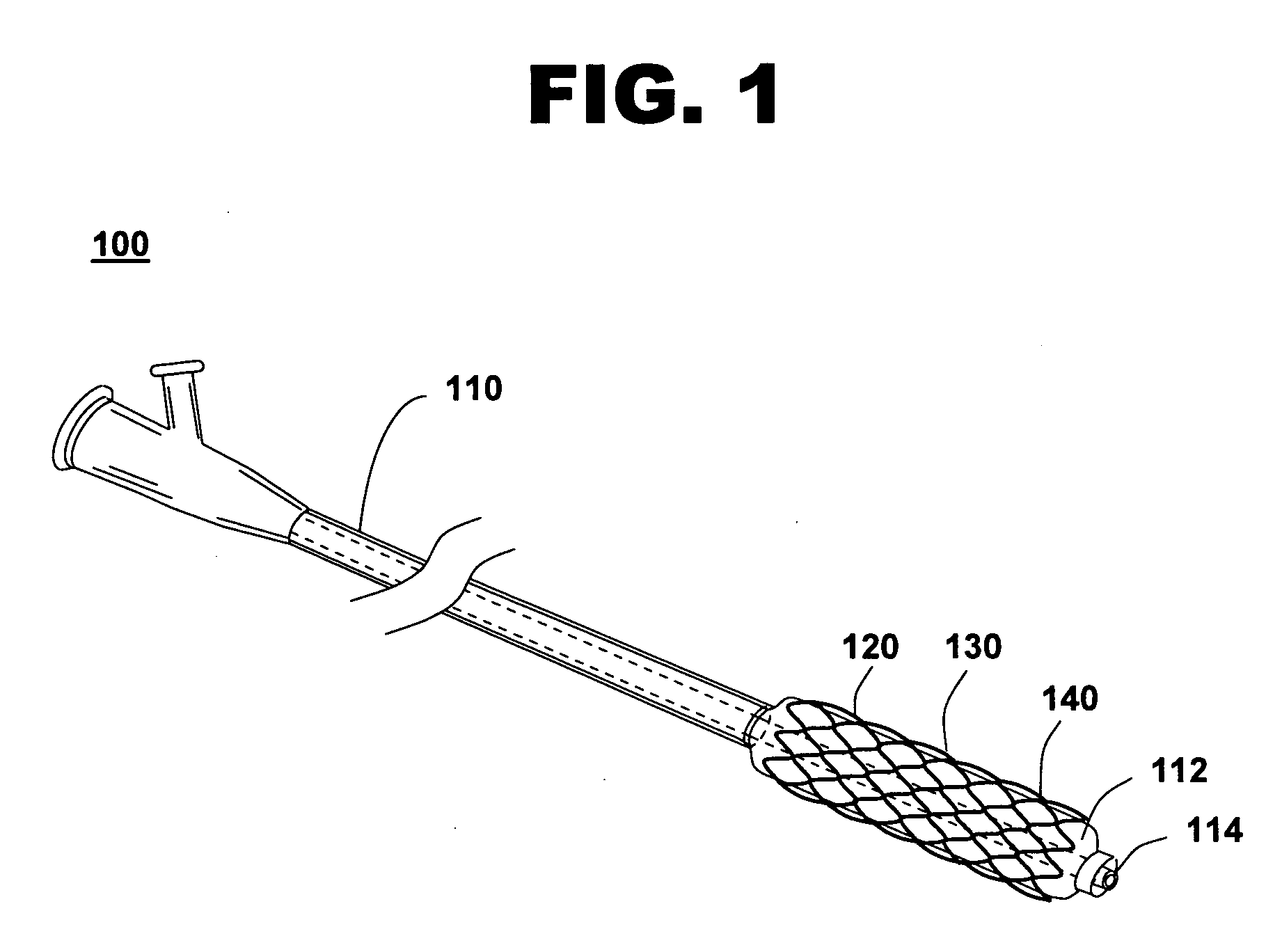Laminated drug-polymer coated stent having dipped layers
a drugpolymer and stent technology, applied in the field of biomedical stents, can solve the problems of excessively rapid elution of incorporated drugs, failure to achieve the desired effect in the surrounding tissue bed, and cracking, flaking, peeling or delaminating
- Summary
- Abstract
- Description
- Claims
- Application Information
AI Technical Summary
Problems solved by technology
Method used
Image
Examples
Embodiment Construction
[0031]FIG. 1 shows an illustration of a system for treating a vascular condition, comprising a drug-polymer coated stent coupled to a catheter, in accordance with one embodiment of the present invention at 100. Coated stent with catheter 100 includes a drug-polymer coated stent 120 coupled to a delivery catheter 110. Drug-polymer coated stent 120 includes a stent framework 130 and a laminated drug-polymer coating 140 disposed on the stent framework. Laminated drug-polymer coating 140 includes a plurality of thin drug-polymer layers positioned between thin barrier layers. The drug-polymer layers include a therapeutic agent and a first polymer. The barrier layers include a second polymer that may also include a second therapeutic agent. The constituents of drug-polymer coated stent 120 are selected to minimize leaching of drug or polymer from underlying layers when forming the multi-layer dip-coated stent.
[0032] Insertion of coated stent 120 into a vessel in the body helps treat, for...
PUM
| Property | Measurement | Unit |
|---|---|---|
| Fraction | aaaaa | aaaaa |
| Fraction | aaaaa | aaaaa |
| Fraction | aaaaa | aaaaa |
Abstract
Description
Claims
Application Information
 Login to View More
Login to View More - R&D
- Intellectual Property
- Life Sciences
- Materials
- Tech Scout
- Unparalleled Data Quality
- Higher Quality Content
- 60% Fewer Hallucinations
Browse by: Latest US Patents, China's latest patents, Technical Efficacy Thesaurus, Application Domain, Technology Topic, Popular Technical Reports.
© 2025 PatSnap. All rights reserved.Legal|Privacy policy|Modern Slavery Act Transparency Statement|Sitemap|About US| Contact US: help@patsnap.com



